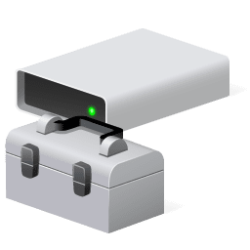This tutorial will show you how to allow or block DLNA media streaming devices access to your shared media for your account in Windows 10 and Windows 11.
DLNA media streaming allows you to share media from your account's personal Music, Pictures, PlayLists, and Videos folders to other users (same computer), computers, and DLNA supported devices on your network. It also allows you to receive media from other computers and DLNA supported devices.
If you turned on DLNA media streaming, any media device detected on your network will automatically get added to the allow/block list and default streaming settings will be applied to it.
If you remove a media device from the list, it will automatically get added back if detected on your network again, and will have default streaming settings applied to it.
You can allow or block media devices to access your shared media.
Here's How:
1 Open the Control Panel (icons view), and click/tap on the Network and Sharing Center icon.
2 Click/tap on the Media streaming options link on the left side of Network and Sharing Center. (see screenshot below)
3 Perform the following actions you want: (see screenshot below)
- Click/tap on Allow All to allow all devices access to your shared media.
- Click/tap on Block All to block all devices access to your shared media, and turn off media streaming.
- Select a media device (ex: "Unknown Device"), and uncheck Allowed to block this device's access to your shared media.
- Select a media device (ex: "Unknown Device"), and check Allowed to allow this device's access to your shared media.
5 You can now close the Network and Sharing Center if you like.
That's it,
Shawn Brink
Related Tutorials
- Enable or Disable DLNA Media Streaming in Windows 10 and Windows 11
- Add or Remove Media Server in Windows 11 File Explorer
- Customize DLNA Media Streaming Settings in Windows 10 and Windows 11
- Remove DLNA Media Streaming Device from List in Windows 10 and Windows 11
- Change DLNA Media Server Name in Windows 10 and Windows 11
Last edited:












